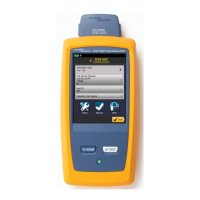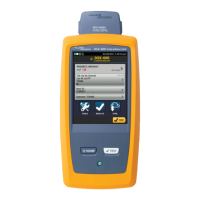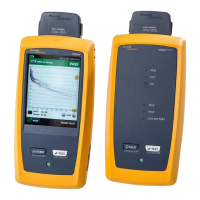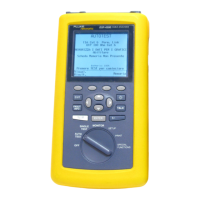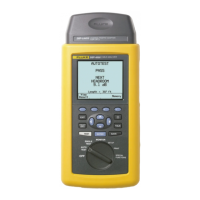DSX-600 CableAnalyzer
Technical Reference Handbook
50
4 On the TEST SETUP screen, tap SAVE when your test setup is
completed.
5 On the CHANGE TEST screen, make sure the button next to
the test is selected, then tap USE SELECTED.
Table 2. Settings for Twisted Pair Tests
Setting Description
Cable Type Select a cable type that is correct for the type you will
test. To see a different group of cable types, tap MORE,
then tap a group. To make a custom cable type, select
Custom in the Cable Groups list. See Chapter 10 for
details.
NVP Nominal velocity of propagation. The tester uses the NVP
and the propagation delay to calculate the length of the
cable.
The default value is defined by the selected cable type
and is the typical NVP for that cable type. To enter a
different value, tap the NVP panel, then tap
or
on the NVP screen to increase or decrease the value.
To find the actual value for a cable, connect a known
length of the cable to the tester, tap MEASURE on the
NVP screen, then change the NVP until the measured
length matches the known length. Use a cable at least
30 m (100 ft) long.
When you increase the NVP value, the calculated length
increases.
Shield Test This setting shows only when you select a shielded cable
type.
On: The wire map test includes a DC test for shield
continuity and AC tests for shield quality. The wire map
test fails if the shield is open or the AC test results are
unsatisfactory.
Off: The wire map shows the shield if the shield has
continuity. The tester does not do AC tests for shield
quality. The wire map test does not fail or show the
shield if the shield is open.
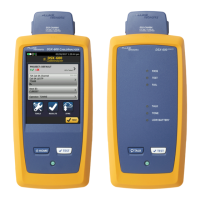
